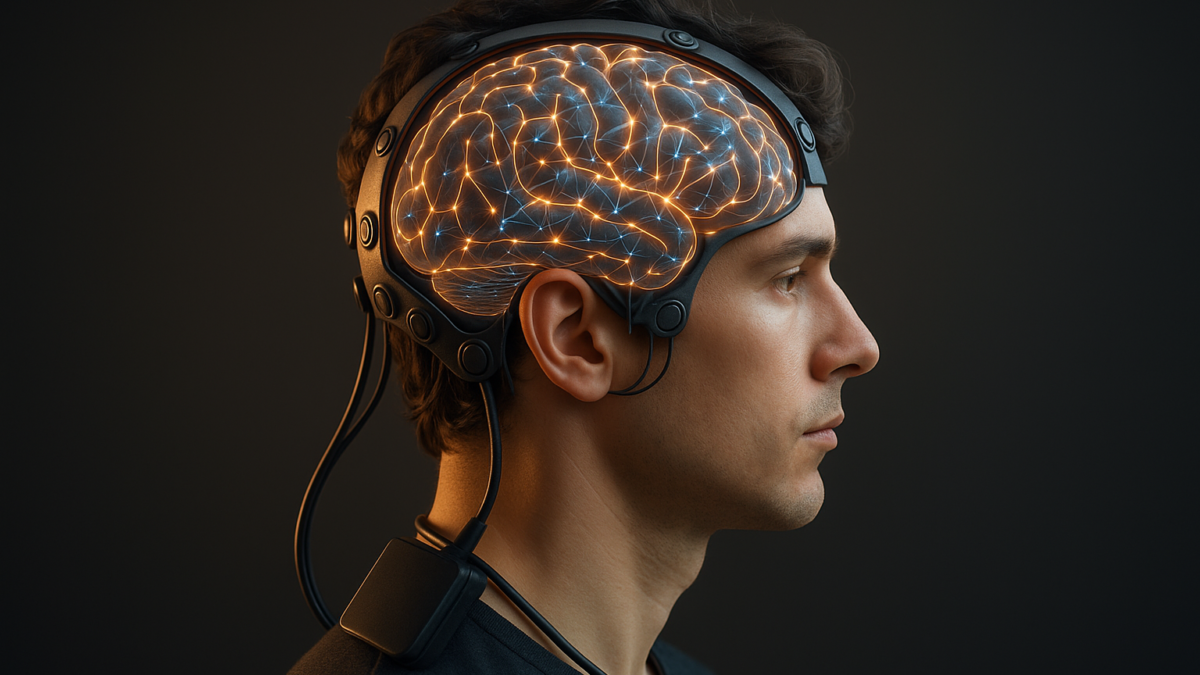The Human Code: How Brain-Computer Interfaces Are Merging Technology and Consciousness
Table of Contents
Introduction: The Next Frontier of Human-Tech Interaction
The line between human thought and machine intelligence is fading faster than ever. At the center of this transformation lies Brain-Computer Interface (BCI) technology a system that connects the human brain directly with digital devices. Once a sci-fi fantasy, BCIs are now redefining how humans communicate, work, and even heal. From enabling paralyzed individuals to control robotic limbs to helping people type using thought alone, BCIs are shaping what experts call “the human code” a seamless bridge between technology and consciousness.
What Exactly Are Brain-Computer Interfaces?
A Brain-Computer Interface (BCI) is a communication pathway that allows direct interaction between the brain and an external device, bypassing the need for traditional inputs like keyboards or touchscreens. These systems capture neural signals, decode them through AI algorithms, and translate them into commands for machines.
Modern BCIs operate through non-invasive (EEG-based) or invasive (implant-based) methods, each with unique use cases. While non-invasive BCIs are widely used in research and gaming, invasive ones like Neuralink’s brain implants—offer groundbreaking potential in healthcare, from treating neurological disorders to restoring sensory functions.
The Promise: Healing, Enhancing, and Empowering
1. Restoring Lost Abilities
For patients with paralysis or neurological damage, BCIs offer a new chance at independence. Companies like Synchron and Neuralink are developing implants that allow users to move prosthetics or communicate simply by thinking. In 2025, several clinical trials have already shown how brain implants can restore motor control or even enable speech generation in patients with ALS.
2. Enhancing Human Potential
Beyond medicine, BCIs are entering the domain of human enhancement. Imagine being able to control drones, smart homes, or digital environments purely with thought. BCIs could soon make multitasking seamless — enhancing focus, learning capacity, and even creativity. Large tech companies are investing heavily in this space to integrate BCIs into wearable technology for next-gen productivity tools.
3. Redefining Digital Communication
BCIs may one day replace typing or speaking with “thought communication.” Meta and other tech giants are experimenting with “silent speech” technology decoding imagined words from brain activity. If successful, this could revolutionize digital collaboration, offering faster, more intuitive interaction.
Challenges: Ethics, Privacy, and Control
While BCIs promise immense benefits, they also pose profound ethical and privacy challenges. If machines can read or influence neural signals, who owns your thoughts?
- Data privacy: Brain data is the most personal form of data imaginable.
- Security: Unauthorized access could lead to “neurohacking” or mental manipulation.
- Ethics: Should enhancement BCIs be limited to medical use, or open to cognitive improvement for all?
Governments and researchers are pushing for neuro-rights legislation, which would protect individuals’ mental privacy and identity. Balancing innovation with ethics will be key to BCI’s sustainable growth.
The Technology Behind BCIs
Modern BCIs combine neuroscience, artificial intelligence, and signal processing.
- Neural decoding: AI models interpret brain activity patterns into actionable data.
- Machine learning: Algorithms refine responses based on user behavior, creating adaptive systems.
- Neural stimulation: Some BCIs send feedback to the brain, closing the loop between input and output.
These technologies are advancing rapidly thanks to cloud computing, wearable sensors, and quantum-inspired processing all accelerating the path toward real-time, thought-based control.
The Future: Merging Mind and Machine
By 2030, experts predict BCIs will evolve from medical tools into mainstream consumer tech. We may soon see brain-controlled AR headsets, gaming systems, or even neural interfaces for education. Imagine learning a language or mastering a skill directly through brain stimulation — a concept once limited to sci-fi, now being explored in neuroscience labs.
Yet, as this integration deepens, the most profound question remains: What happens when the human mind becomes part of the digital network?
Will consciousness merge with computation, or will humans learn to coexist symbiotically with intelligent machines?
Conclusion: The Dawn of the Human Code
BCIs represent the ultimate evolution of human-computer interaction one that transforms how we think, connect, and create. As technology begins to decode the human mind, society stands at the threshold of a new era where intelligence is both biological and artificial.
This isn’t just about controlling machines with our thoughts it’s about understanding what it means to be human in the age of connected consciousness.
Turn your content into conversations. Start generating qualified B2B leads with iTMunch’s content syndication today.
See Also: AI-Generated Whitepapers: Can Machines Create Trustworthy B2B Content?





